
Some people don’t know anything about ceiling lamp Material and don’t know which one is suitable for them.
When they go to a lighting store, the salesperson often just says what they say.
Therefore, you need to know some basic knowledge about ceiling lamps before purchasing, so that you can know yourself and the enemy and buy without regrets.
Today, Chenchen will introduce to you what a ceiling lamp is, the material and size of the ceiling lamp, the difference between the ceiling lamp and the suspended ceiling lamp, and the installation method of the ceiling lamp. Come and find out!
1.What is a ceiling lamp?
Ceiling lamps are named because the top of the lamp is flat and the bottom can be safely attached to the roof when installed.
With the development of technology, the changes in ceiling lamps are also changing with each passing day.
They are no longer limited to single lamps, but have developed into diversification.
They not only absorb the luxury and style of chandeliers, but also adopt the installation method of ceiling lamps to avoid the problem that cannot be achieved in shorter rooms.
The disadvantages of installing large luxury lighting.
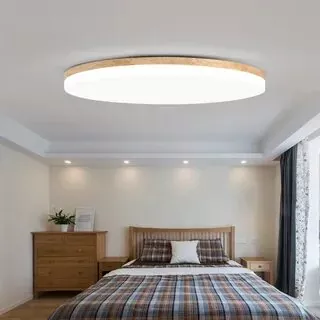
2.The difference between ceiling lights and suspended ceiling lights
The difference between a ceiling lamp and a suspended ceiling: the lamp body of the ceiling lamp is installed directly on the roof and is suitable for overall lighting.
Ceiling lamps are basically the same as chandeliers in terms of functions and characteristics, but are different in form.
The difference from chandeliers is that ceiling lamps are used in different spaces. Chandeliers are mostly used in higher spaces, while ceiling lamps are used in lower spaces. In addition, ceiling lamps require longer lamp bodies.
3.Material of ceiling lamp
Like other lamps, ceiling lamps are made of many materials, including plastic, glass, metal, ceramics, etc.
Among them, ceramics and glass have a longer lifespan, are not easy to age, and are more fashionable.
The metal parts on the lamp, such as screws, will slowly oxidize, and the use time is generally about 5 years.
The ones that age faster are plastic ceiling lamps, because plastic will deform when heated.
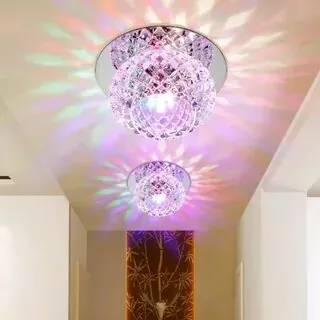
4.Master the purchasing skills of ceiling lamps
There are countless types of ceiling lamps on the market.
How can you choose the right product?
Now, let’s learn about the purchasing skills of ceiling lamps.
1.Determine the purchase quantity first
The places where ceiling lights are needed in a house include the living room, dining room, balcony, kitchen, bathroom, bedroom, study room, etc.
Before purchasing ceiling lamps, everyone must first calculate the quantity to be purchased. For bedrooms, you can choose products from the same series;
for living rooms and dining rooms, you can choose products from the mother-child series; for kitchens and bathrooms, you can choose products that are the same size as the integrated ceiling.
2.Choose a style
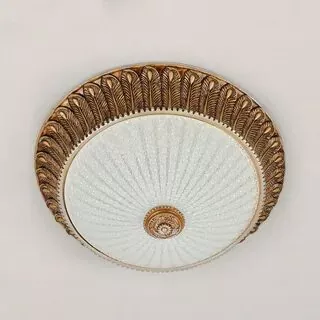
Ceiling lights come in two shapes: round and square.
Generally, it is more suitable to choose round ceiling lights for living rooms such as bedrooms and studies;
while square ceiling lights for living rooms, dining rooms, etc. make the space wider; kitchens and bathrooms are generally square in shape similar to integrated ceilings.
3.Choose mask material
The cover of the ceiling lamp is something we can actually touch.
There are many manufacturers of ceiling lamps on the market, and they use different mask materials.
The most common ones are acrylic masks, plastic masks and glass masks.
The best is the imported acrylic mask that has been stretched twice.
To test the quality of the mask, you can first press the mask with your hands to see how soft it is. If it is soft, then put your palm over it and see the color.
If it is ruddy, you can finally open the cover to see if it is easy to disassemble.
4.Select light source
According to the different light sources used, ceiling lamps can be divided into ordinary incandescent lamps, fluorescent lamps, tungsten halogen lamps, LED lamps, etc.
Ceiling lamps with different light sources are suitable for different places. For home use, LED lamps should be preferred.
LED light source ceiling lamps are not very expensive, but they save energy, have a long service life, are very bright, and are very cost-effective.
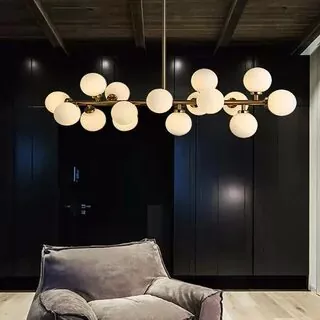
5.Choose the size of the ceiling lamp
The size of the ceiling lamp should be determined based on the lighting area.
Be careful not to use too small a ceiling light, which will make the ceiling appear empty, and not to use an oversized ceiling light, which will appear overwhelming.
Generally speaking, if the bedroom area is less than 10 square meters, choose a ceiling lamp with a diameter of less than 45cm;
for a bedroom with a size of 10-20 square meters, choose a ceiling lamp with a diameter of about 60cm;
for a bedroom with an area of 20-30 square meters, the diameter of the ceiling lamp you should choose Around 80cm.
How to install ceiling lights
If the ceiling lamp is purchased in a physical store, a master will usually come to install it for free;
if it is purchased online, the decoration master or the owner needs to install it by himself.
Installing a ceiling light is not difficult. It only requires a few simple steps. Let us learn together.
1.Choose a location
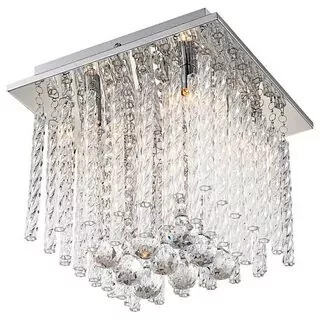
The first thing to do when installing a ceiling lamp is to determine the installation location of the ceiling lamp.
For example, ceiling lights in the living room, dining room, and kitchen are best installed in the middle, so that the light in each location is relatively even.
As for the bedroom, considering the impact of mosquito nets and light on sleep, try not to install the ceiling lamp above the bed.
In addition, the ceiling lamp needs to be installed on a wall or ceiling that can withstand the weight of the ceiling lamp, such as masonry structure.
Try not to choose a wooden wall to avoid the risk of falling over time.
2.Remove the ceiling lamp mask
Remove the ceiling lamp cover.
Generally, the ceiling lamp cover can be fixed in two ways: rotating or buckling. Pay attention when removing it to avoid damaging the ceiling lamp.
After taking off the cover, remove the lamp tube. Remove it to prevent the lamp from being broken during installation.
3.Install the base
Place the base at the intended installation position, mark the wall with a pencil, then remove the base, use an electric drill to drill holes at the marked position, and then install expansion bolts to fix the base in the holes.
Note that the diameter of the drilling and the depth of embedding should be consistent with the bolts. Specifications match.
Then put the base back to the predetermined position and fix it.
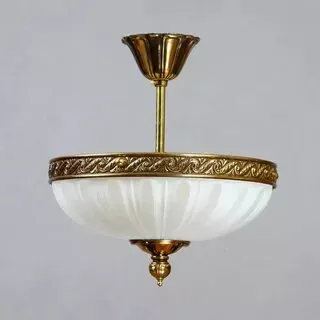
4.Connect the wires
After fixing the base, you can connect the power cord to the wiring base of the ceiling lamp.
It should be noted that the two wires connected to the ceiling lamp power cord should have good electrical contact and should be wrapped in black tape respectively.
Keep a certain distance, and if possible,
try not to put the two wire ends under the same piece of metal to avoid short circuit and danger.
5.Install masks and pendants
After connecting the wires, you can try to turn on the power. If everything is normal, you can turn off the power and install the cover of the ceiling lamp.
The ceiling lamp in the living room also needs to be equipped with a series of pendants, because each ceiling light pendant is different, so please refer to the product manual for specific installation methods.
There are usually leftover pendants, which can be stored after installation and replaced if necessary in the future.



